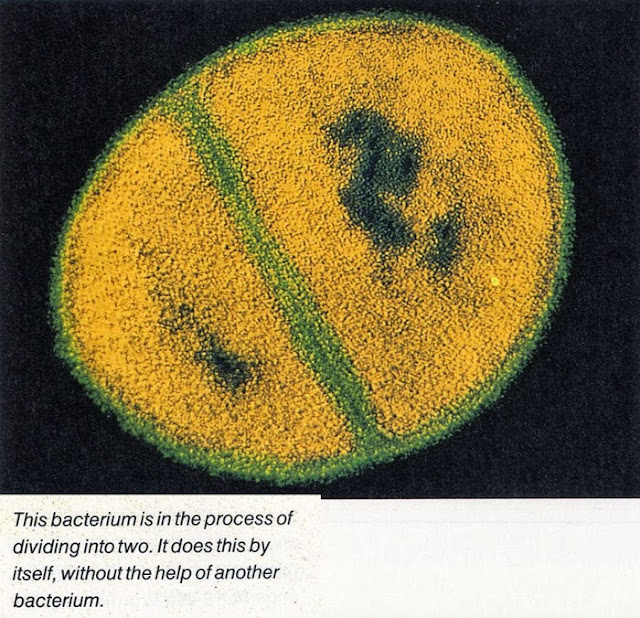What is Reproduction?
Human beings have babies.Fish lay eggs which hatch into young fish.
Trees grow seeds which can grow into new trees.
Living things make copies of themselves.
This is the process of reproduction.
Asexual reproduction
There are two different kinds of reproduction.In one kind, there is only one adult of the species, and the young ones look exactly the same as their parent. This kind of reproduction is called asexual reproduction.
Living things reproduce like this in several different ways.
The simplest living creatures reproduce by just splitting in two.
Most creatures that are made up of only one cell reproduce in this way.
Even some simple animals such as sea anemones, whose bodies are made up of many cells, can do this.

Many plants can make new plants from a small piece that has broken off, such as a twig or stem.
This is useful if the plant has been damaged by animals or by strong winds.
It is also useful to gardeners, because it means that they can take cuttings, which grow into new plants.
The plants grown from cuttings will be exactly the same as the parent plant.

Sexual reproduction
In sexual reproduction, there are two adults of the species— one male and one female.The young ones are not quite the same as the parents.
Human beings reproduce in this way.
You don't look exactly like your parents, though you may look a bit like both of them.
This is true of other animals and plants with two parents. They take some of their features from one parent and some from the other.
For sexual reproduction to take place, one cell from the male must unite with one cell from the female.
In animals, the male produces cells called sperm and the female produces egg cells.
When one egg cell joins with one sperm cell, fertilization is accomplished.
The fertilized egg then begins to develop into a new organism.
Fertilization can happen inside or outside the female's body.
In most fish and frogs, the female lays eggs and the male releases his sperm over them.
In birds and mammals, the male's sperm fertilizes the eggs inside the female's body.
In plants, the male cells are called pollen.
Pollen is carried from male flower parts to female flower parts by insects or by wind.
The pollen fertilizes the egg cells and produces seeds, which grow into new plants.
In many plants, the male and female flower parts are in the same plant.










Social Plugin